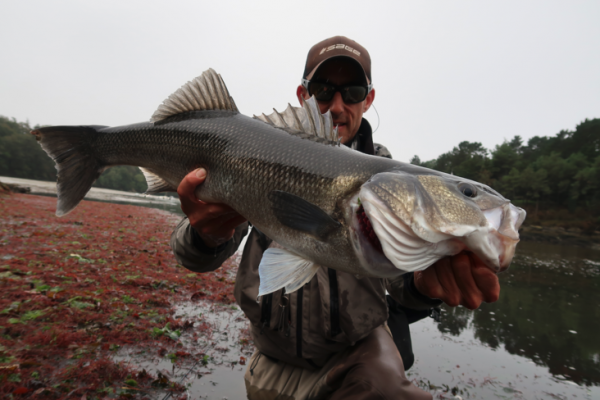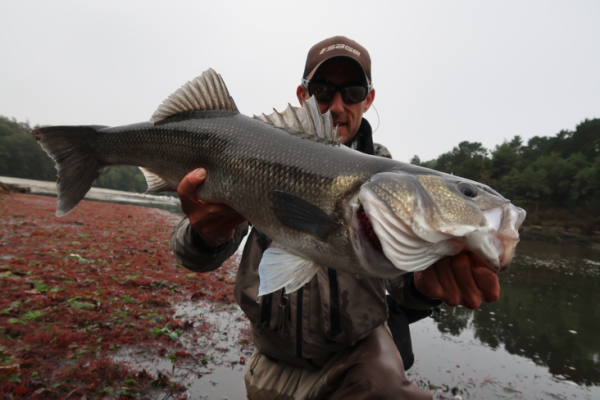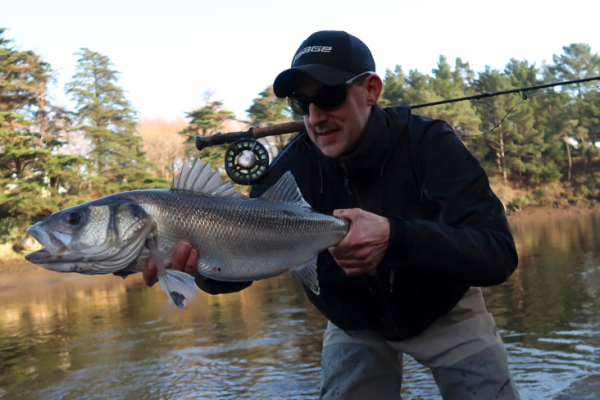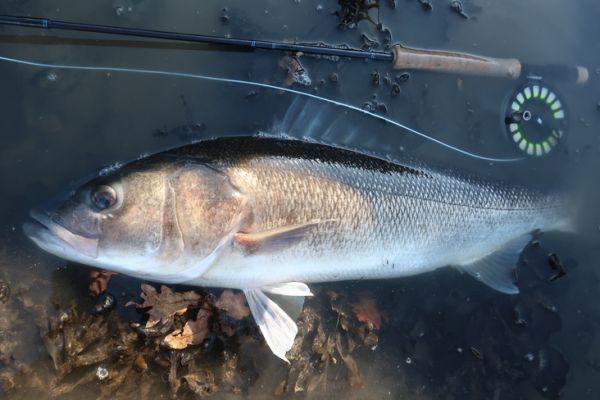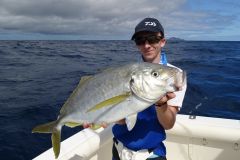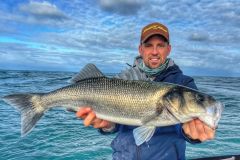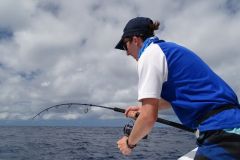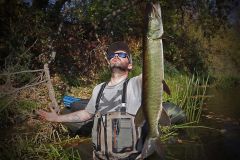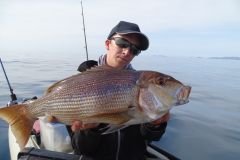What is a big bar?
The notion of a big fish will vary from one angler to another. For example, a 50 cm bass may be considered a large specimen in certain regions or environments, or by certain people.
In this article, a big sea bass is a fish that exceeds 60 cm, but we'll be talking more about sea bass that exceed 70 cm or even more, because these trophy fish do exist!
Their weight will depend on their environment, morphology and season. Sea bass gain weight all year round, but especially in autumn, when they store protein to build fat before winter.
Also, estuary bass are often much larger in size than in the open sea.
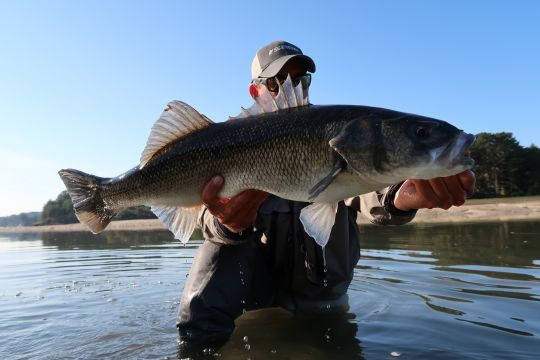
Adapting your equipment
To find the big bass, you first need to acquire the right equipment and leave nothing to chance. There's no room for error!
A fast-action 9-foot rod with a power of 8 or even 9 is ideal for casting certain flies and fighting/restricting these fish. It should be fitted with a reel with a watertight drag (for longer life) and a line adapted to the situation (floating to very sinking). There are special sea bass lines, such as Rio Striper (for striped bass), which are well suited to this type of fishing.
It's a good idea to use a well-made fluorocarbon tip, which will resist abrasion better and be less visible, but also to adapt its resistance to the type of fishing practised, the color of the water, the environment and the presence of obstacles (see below), as well as to the wary nature of bass.
The flies should be mounted on hooks that are sharp and, above all, strong and therefore resistant, to avoid any disappointment.
Finding the right spots
As with all big fish, there's no such thing as an insignificant spot. Big sea bass are fond of particular places and will behave in specific ways. So you'll need to spend some time analyzing their behavior and finding the habitats and types of spots where these fish usually feed.
It's possible to catch large sea bass in any environment, but the best chances are often in estuaries, which offer good growth, not only because of their richness, but also because of this particular habitat where large specimens find their place and easy food, particularly green crabs.
In prospecting fishing, there is a small element of luck and chance, but in the end, it is also possible to look for bigger fish by going to specific spots and fishing differently.
On sight, by visually searching for fish, it's possible to specifically target the big bass and leave the smaller ones behind. But in this case, you'll need to find the spots where these beautiful fish regularly come to feed.
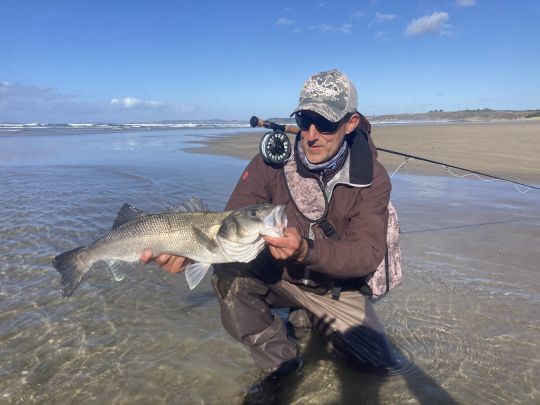
Streamer fishing: boat, beach, and other environments
Big bass live in all kinds of environments. However, they become big because they have a natural distrust that must be overcome, and they know where to find their food source in particular positions.
Whether on the beach or on the coast, it's also possible to catch big sea bass.
On the beach, sometimes under certain conditions, these fish maraud in search of prey, and it's possible to catch them on sight. It's quite rare, but possible.
Often it's by streamer fishing that you'll be lucky enough to stumble upon them. But if you know your fishing zones, you'll gradually find more interesting spots for larger fish. It's not the habitat where the biggest fish get caught, but in autumn bass are more active once the summer is over, and will be more often active and therefore potentially catchable.
From a boat, it's by looking for well-marked spots that you'll find big bass. Flies may not be the ideal technique for catching these big fish, which often live in strong currents (rock heads, drop-offs, plateaus), or at a certain depth. But by adapting your equipment and fishing more slowly and at greater depths, you'll increase your chances of catching fish over 60 cm. Or, at any rate, catch pretty fish more often.
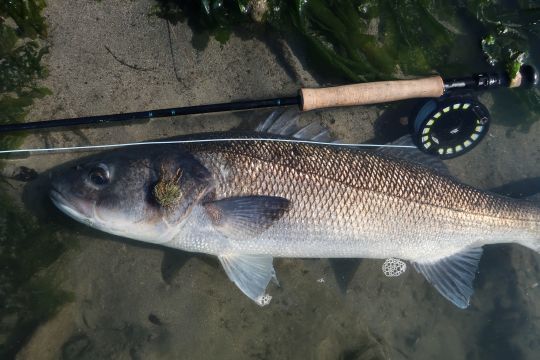
Stalking fat people on sight: the best approach!
You'll have the best chance of catching big fish by sight, but they have to be earned. And yes, because it's visually that we "attack" these fish and therefore allow us to "select" them. Nonetheless, there will be an important research and prospecting phase to find these unusual fish!
They can be found in all estuaries, with some very large fish exceeding 80 cm and even reaching 90 cm to 1 meter! These big bass have to come in very little water in search of their favorite food: crabs. These prey follow the movements of the water according to the tide and are often found on the edges of rocks and wrack.
In this case, they put themselves in danger to get to the bottom of them, but their natural distrust and adaptability mean that they rarely, if ever, get caught!
Sea bass over 70 cm systematically analyze their prey. They rarely pounce on just anything, although fortunately for us, sometimes they are more active feeders and we manage to outsmart them.
On the beach, but also in the oyster beds, large sea bass are present. Once again, you'll need a very good knowledge of each area to know where and when to find them.
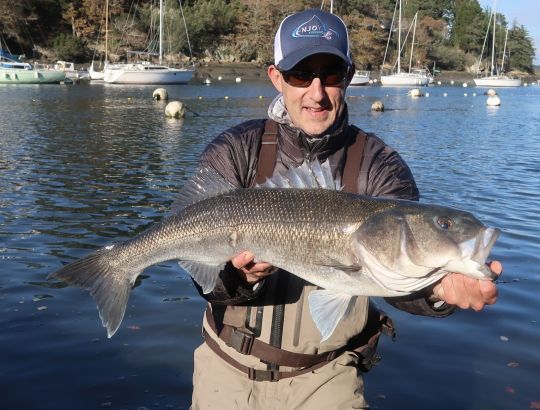
Let's respect these big bass and get them back in the water!
These trophy fish don't deserve to be kept for our culinary pleasure! They're not the best tasting fish either. They are old fish that deserve our respect, and often very good broodstock for the future of the species.
So it's a good idea to return them to the water in the best possible conditions. Taking a photo for our own pleasure, but without endangering their survival.
It's better to keep fish between 45 and 55 cm, or even up to 60 cm, than to keep these magnificent trophy fish!

 /
/ 